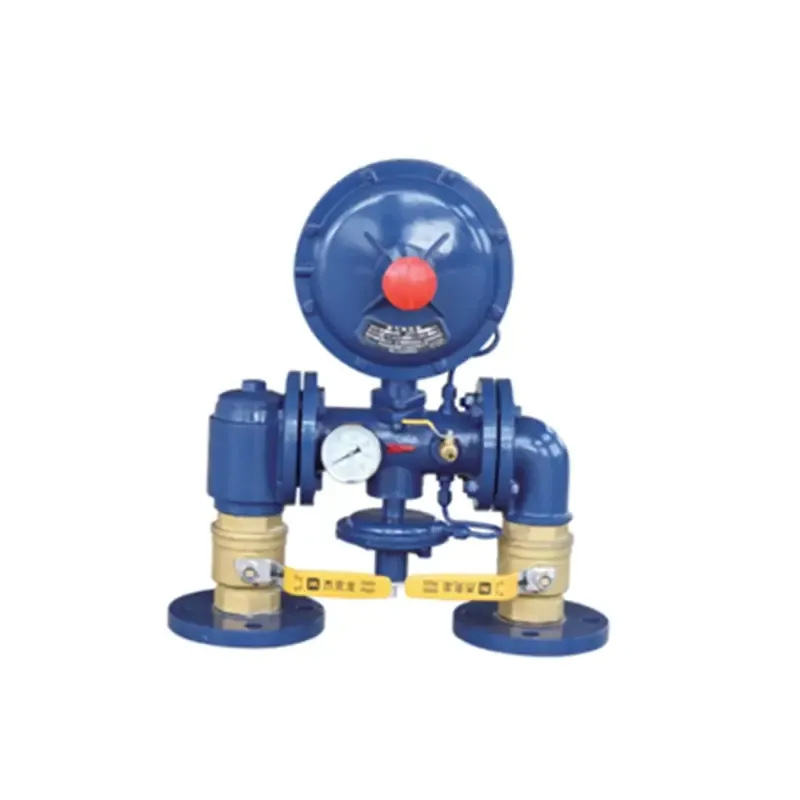
Dec . 29, 2024 13:17
Back to list
natural gas safety valve
The Importance of Natural Gas Safety Valves
Natural gas has become an integral part of our daily lives, powering our homes, industries, and vehicles. However, with its widespread use comes the potential for accidents if safety measures are not properly implemented. One of the key components in ensuring the safe use of natural gas is the safety valve. This article will explore the significance of natural gas safety valves, their function, types, and maintenance practices, ultimately underscoring their role in safeguarding lives and property.
What is a Safety Valve?
A safety valve is a device designed to control the pressure in a system, playing a crucial role in preventing overpressure situations that can lead to system failures or explosions. In the context of natural gas applications, these valves are crucial for regulating the pressure within pipelines, storage systems, and appliances. They typically operate automatically, popping open when the pressure exceeds predetermined levels to release excess gas and prevent catastrophic failures.
Functions of Natural Gas Safety Valves
Safety valves serve several essential functions in natural gas systems
1. Pressure Regulation The primary function of a safety valve is to maintain pressure within safe limits. Natural gas systems must operate at specific pressure levels for optimal performance. If the pressure rises beyond these levels, the safety valve intervenes to protect the system.
2. Leak Prevention Safety valves can help in avoiding gas leaks, which pose significant health and environmental risks. By preventing overpressure, they reduce the likelihood of seals and connections failing, which can lead to dangerous leaks of natural gas.
3. System Protection In the event of a malfunction or surge in demand, safety valves ensure that the entire system remains protected. This is particularly important in industrial applications where the consequences of a gas explosion can be catastrophic.
4. Emergency Response Safety valves act as a first line of defense in emergencies. If an anomaly is detected, these valves respond quickly to mitigate the risk, ensuring the safety of personnel and the surrounding area.
Types of Safety Valves
There are various types of safety valves used in natural gas applications, each designed for specific scenarios
natural gas safety valve

1. Spring-Loaded Safety Valves These are the most common type, utilizing a spring tension mechanism to hold the valve closed until pressure exceeds the set limit, at which point it opens automatically.
2. Pilot-Operated Safety Valves These valves use a small pilot valve to control a larger main valve. They are designed for high-pressure systems and offer precise pressure control.
3. Balanced Safety Valves These are designed to minimize the effects of back pressure on the valve opening and closing. They are particularly useful in systems with fluctuating pressures.
Maintenance of Safety Valves
Regular maintenance of natural gas safety valves is crucial to ensure their functionality. Operators should adhere to the following practices
1. Routine Inspection Regularly inspect safety valves for signs of wear, corrosion, or malfunctioning components. Early detection of issues can prevent failures.
2. Testing and Calibration Conduct routine tests to confirm that valves open and close at the designated pressure settings. Calibration is essential to ensure the proper operation of safety valves.
3. Cleaning Ensure that the valve components are free from debris and contaminants, which can impede the valve's operation.
4. Documentation Keep detailed records of inspections, maintenance, and replacements to establish a history of the valve’s performance and to comply with safety regulations.
Conclusion
Natural gas safety valves are vital components in the infrastructure that supports our reliance on natural gas. Their functions in pressure regulation, leak prevention, and system protection make them indispensable for both residential and industrial applications. By understanding their importance and committing to regular maintenance, we can contribute to a safer environment for everyone. Investing in safety valves not only protects lives but also promotes responsible energy consumption and sustainability.
Latest news
-
Safety Valve Spring-Loaded Design Overpressure ProtectionNewsJul.25,2025
-
Precision Voltage Regulator AC5 Accuracy Grade PerformanceNewsJul.25,2025
-
Natural Gas Pressure Regulating Skid Industrial Pipeline ApplicationsNewsJul.25,2025
-
Natural Gas Filter Stainless Steel Mesh Element DesignNewsJul.25,2025
-
Gas Pressure Regulator Valve Direct-Acting Spring-Loaded DesignNewsJul.25,2025
-
Decompression Equipment Multi-Stage Heat Exchange System DesignNewsJul.25,2025

